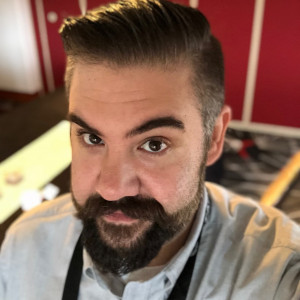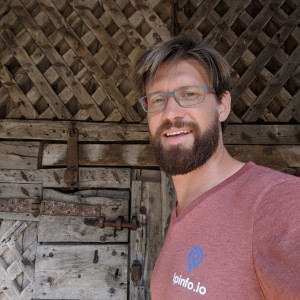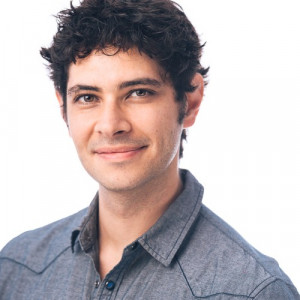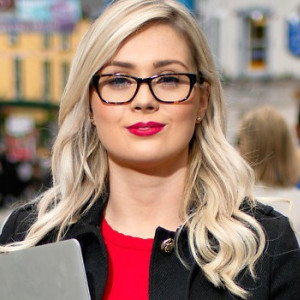How did you get started with remote work?
Interview with Shivani, a remote content writer who shares lessons learned
I spent a decade after college working in offices — with a magazine for almost two years and a law firm for another eight. Through a lot of my legal career, I took up writing projects as a freelance business because I never wanted to stop writing. In March 2015, after a good year of thinking about it, I quit my job as a lawyer to become a full-time freelance writer.
On my first day as a freelancer, a friend reached out to me for a new project she was starting — telling stories about the people and places that give a city its character.
She was building a team, and she asked if I’d be interested in working with her. She lived in London; I was in Mumbai, and we’d be working remotely. I said yes right away, and that’s how it began!
Shivani provides all you need to know about making remote work...work. She shares tips on finding the best remote work opportunity and thriving once you get it.
Read full interview from Interview with Shivani, a remote content writer who shares lessons learned.
Interview with Nelvina, a fashion designer who designs bags and clothing
I quit my job as a product developer in a local textile firm as I was not very happy there and it was also difficult to cope with my demanding job and my studies (MBA). Work started at 7:30 until 17:15 sometimes even 20:00 or 22:00.
I started by producing a few bags and accessories and sold them on Facebook to get a little money but I only sold a few products. So I started to look for a few freelance design jobs online and came across sites like Freelancer, PeoplePerHour and Upwork.
Working a on a freelance basis scared me as I was not sure if I would get regular work. I created my profile and bid on some jobs. What I really liked about Upwork is that you do not have to provide the lowest bid for the client to choose you. It will mainly depend on your portfolio and the interview.
After about 1 month, I got my first offer to design a leather bag collection for a startup and after the first project was completed, he gave me regular work for the next couple of months.
However, after the project was completed, I got one or two one-off projects and it became difficult to have a decent salary at the end of the month. I started applying to full time jobs and got a couple interviews. Nevertheless, I decided to continue working in freelance as this made me happy and also gave me time to focus on my Master’s degree.
With a few more projects, I started to build my portfolio and became more confident about my skills and got more and more jobs.
I eventually started offering other design services like label, logo and packaging design. I now mainly work on Upwork and get a few other projects locally or from contacts.
Nelvina is a freelance fashion and graphic designer that works remotely while working with clients all around the world
Read full interview from Interview with Nelvina, a fashion designer who designs bags and clothing.
Interview with Eddie, an Engineering Director
I eased into remote work. Around August 2009, I was living 30 minutes away from my job at the time. I convinced my boss that I could work from home 1-2 days a week.
This was a great benefit to me, as we were in the process of building and launching a new SaaS service. It gave me the time and space I needed to be completely focused.
Back then, we still called it "telecommuting", and - given that the rest of the company was all colocated in the same single office - it wouldn't fit what I consider the modern definition of remote work.
Fast forward to 2012, when I joined Litmus. The company was already semi-distributed; about 20% of the company was in the UK, including my boss, who was the developer of our Rails team and one of the co-founders. (If you're reading this, Dave, hello beardy!).
As we grew the engineering team, we decided to hire the best candidates regardless of where they were located. We hired folks in the US, but also Canada, Italy, Berlin and the UK.
By the summer of 2014, remote work was going so well that our founders decided to extend the opportunity to all employees. I leapt at the chance, moved further away, set up a proper home office, and the rest is history.
Eddie is an Engineering Director - learn how he manages to absorb interruptions and manage information overload while staying productive.
Read full interview from Interview with Eddie, an Engineering Director.
Interview with Michael, a VFX artist that works remotely
In college while I did the assignments the professor’s would answer questions and most of my questions pertained to freelance work. I never thought I would get a studio job right off the bat, and I put most of my effort learning everything I could, as much as I could.
So I put all the information I had together right after college and went into business for myself and it was slow. It picked up here and there, but after a year the work increased a lot by working with others.
So my first gig was paying a 15% to my contractor to find me work. After 2 years, the money was still better than when I started but still it just wasn’t enough. So I tried going solo again with a lot more experience. I had some setbacks that withheld my 100% time to remote work though. New addition to the family, Hurricane Harvey, money issues, car breaking down, house payments, it was rough for that year.
So initially going back into work for myself I had to work cleaning up hurricane debris for 4 months to save up to build another computer. I still watched videos on YouTube learning on my free time, because after all the work that I did I understood more what artists do with their work.
The shortcuts helped immensely and finally when everything was rebuilt I jumped back into the freelance work. I went from college to only knowing Maya, Udk, and some Python scripting. To rigging, texturing, hair systems, fluid systems, visual effects, material shaders, architectural visualization, and so much more.
With the experience though, I signed NDA’s, or non-disclosure agreements, so showing a lot of it was out of the question to former clients. Work was lost with the hard drive being fried, and my personal server had data corruption.
Starting back at the position I was in before but with more experience I decided to work part time and do freelance work while perfecting a demo reel to attract future clients. So far I’ve had one client in the first week for some small work, but it’s a start and sooner or later I’m positive I can make more satisfied customers and enjoy making the art I’ve always loved creating.
Michael is a freelance visual effects (VFX) artist, creating 3d models, mockups and videos while working remotely.
Read full interview from Interview with Michael, a VFX artist that works remotely.
Interview with Ayesha, a freelance writer that gained early clients through her blog
After I left university, I began immediately working as a copywriter/designer at a small advertising agency. I’m sure we all know the ungodly hours required at an advertising agency. Even though I was finally earning money some good money, I felt I never had the time or the energy to spend them. I was exhausted in just three months.
I had heard of freelancing and working remotely in my university days. But that felt like a zero-calorie chocolate ice-cream- too good to be true.
I didn’t have the experience or the contacts to get work like that.
Then, I got married. I left my job due to some personal reasons and the fact that I was ready to leave at the slightest excuse. The first few months were bliss. Relaxing. Getting up at my own time. But in a few months, I was restless. I needed to work.
My husband is also from the advertising field. Thankfully, he helped me get a remote job. This was on Upwork. The pay was low, but at least it was some work. At that point, I only wanted something to work on.
The experience from that small job helped me land more jobs on Upwork. All this was happening while I delivered two kids and had a lot on my plate. Sometimes I couldn’t work. Sometimes I had no work. But I was in a good zone. It was exhausting but this was something I enjoyed doing.
A few years later, I got the confidence and the know-how to start my own blog. I created the entire blog on my own just by watching YouTube tutorials and help from our reliable buddy, Google. This blog started bringing my good, consistent work. People could now see what I had done. So they gave me work.
Ayesha is a freelance content writer—learn how she made the leap to remote work while building her blog and raising her family
Read full interview from Interview with Ayesha, a freelance writer that gained early clients through her blog.
Interview with Ben, a CEO/Engineer who works remotely
I'd always worked in offices, but when I started working fulltime on IPinfo almost 2 years ago, it was just me - I'd work out of coffeeshops and my favorite, the local library.
As I started hiring a team, making it a remote one just made a ton of sense to me: I could hire anyone from around the world, instead of just locally, and I could remain flexible with my own location and schedule.
Ben is a CEO/Engineer who works remotely - find out how he balances working at home and family life!
Read full interview from Interview with Ben, a CEO/Engineer who works remotely.
Interview with Kevin, a developer and remote consultant
In 2009, I quit my job to backpack around the States and South America, and started freelancing remotely to support myself (as a means to an end). That ended in 2012, when I went back to school.
In 2013-2014, I had an onsite position as a developer, but in 2014 I took a full-time remote position working as a developer for Tenable .
I wasn't sure what it'd be like working a full-time job remotely, but I loved it and was so much more productive.
In 2016, I started my own remote consulting firm, and I've been doing that ever since. I'm based in Boston, with most of my clients in New York or San Francisco.
Kevin is a developer and consultant working on many different projects - learn which tools he uses to optimize his time management.
Read full interview from Interview with Kevin, a developer and remote consultant.
Interview with Elizabeth, a graphic designer and art director
I started working remotely in 2012 after being made redundant from a very comfortable corporate job in investment banking. I’d moved out of London to escape the city during my time there, but that resulted in a pretty intense daily three-hour commute.
I didn’t love it, but it was what worked for me and my family at the time.
I knew it wasn’t sustainable and it really hit home that something needed to change when I took a sick day and my then seven-year-old daughter asked me why I was there when she woke up that morning.
I didn’t have an exit strategy and was actually relieved when they provided me with one.
I took some time off, did a bit of ad hoc work here and there and was on the verge of “I’ll never get a job again” panic when an entrepreneur I’d worked with before called me, looking for remote help with a start-up he was working on. I thought, “I have a computer and a phone, it might work, so why not?” and we gave it a go.
The start-up didn’t work out BUT we knew we were on to something with the whole remote assistance thing. We quickly brought one of my investment banking colleagues on board, and the business took off and eventually grew to include a handful of dedicated employees who further proved that remote work was not only viable but rather exciting.
We accidentally created one of the first companies in the UK to provide virtual ‘office in a box’ services in the UK by simply filling a need we had ourselves. I’m very proud of that.
I exited that business and have since started another business, this time calling on my creative background and strengths. I now work as a freelance graphic designer and art director with a specialism in cohesive small business branding.
Elizabeth provides the ultimate list of tips for aspiring freelancers and remote workers. Check out her game-changing tools, and advice for thriving as a freelancer.
Read full interview from Interview with Elizabeth, a graphic designer and art director.
Company Interview with Maxime, Co-founder and CTO of Digicoop
The company has been remote-first since day one. It was something evident for us. First, when we started the company, we had no offices, so remote was the only way. Second, we all had experience working remotely and enjoy it.
Finally, the fact that we decided to do a worker cooperative means we already trust employees fully as they are also shareholders. So all these aspects of remote work that make some companies hesitate was a non-issue.
From making employees shareholders to letting workers take control of their roles, Maxime describes Digicoop's path to remote success.
Read full interview from Company Interview with Maxime, Co-founder and CTO of Digicoop.
Interview with Shauna, founder and business consultant specializing in remote work
My business is Operate Remote. I work with companies to help them maximise their opportunities and minimise their challenges when it comes to distributed working.
I do this through consulting and coaching in a range of different areas; operations and strategy, leadership, communications and even team culture and engagement. I love helping businesses find their own ways of managing distributed teams.
Remote working isn't smooth, and it's definitely not for everyone, but when companies have the right mindset, strategies, and skill sets in place— they can create something extraordinary and unique.
Shauna is a consultant that guides companies in thriving while remote—see her advice for staying grounded as a remote worker.
Read full interview from Interview with Shauna, founder and business consultant specializing in remote work.









